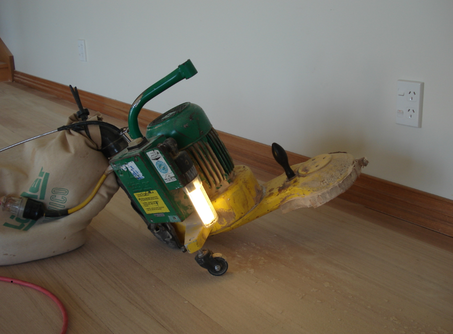Ask Yourself These Questions Before You Decide to Sand Wooden Floors

Wooden flooring is a great options for many home owners. It looks great, and lasts for years. There are many options to choose from, and it adds value to any home.
One downside of wood flooring is that it can easily get scuffed and scratched. It can show the telltales signs of excess moisture and constant wear after just a few years. Fortunately, such damage can be repaired by sanding and refinishing your hardwood floor.
Here's a few questions to ask before you decide to sand your wooden floors:
1. Can I do it by myself?
You can buy or rent a good sanding machine from your local hardware store or specialty retailer. It costs a couple dollars per square foot on average to sand and refinish your floor. If you have the time and budget to do it by yourself, it's well worth the effort. It's a nice project that you can complete in just a day. If you're not up to the task, you can always have a professional do the job for you. Just keep in mind that the cost may be at least twice or more than what it would cost to do the job yourself.
2. What should be done after the floor is sanded?
Most homeowners usually apply a few coats of finish to their wood floor after it has sanded. First you need to sweep off any excess dust that may have accumulated. There are different kinds of stain and finish that you can use. Most products do a good job of keeping moisture, dirt and grime out of your floor for years. If you have hardwood floors made of maple, fir, birch or pine, you may want to call in a professional to help with your finish or stain, as these kinds of woods can be difficult to stain evenly.
Hardwood floors are a great investment in your home. However, they need regular care and maintenance just like most other types of flooring. Taking the time to properly sand and clean your hardwood floors can help retain their natural look and extend their useful life for years to come.
One downside of wood flooring is that it can easily get scuffed and scratched. It can show the telltales signs of excess moisture and constant wear after just a few years. Fortunately, such damage can be repaired by sanding and refinishing your hardwood floor.
Here's a few questions to ask before you decide to sand your wooden floors:
1. Can I do it by myself?
You can buy or rent a good sanding machine from your local hardware store or specialty retailer. It costs a couple dollars per square foot on average to sand and refinish your floor. If you have the time and budget to do it by yourself, it's well worth the effort. It's a nice project that you can complete in just a day. If you're not up to the task, you can always have a professional do the job for you. Just keep in mind that the cost may be at least twice or more than what it would cost to do the job yourself.
2. What should be done after the floor is sanded?
Most homeowners usually apply a few coats of finish to their wood floor after it has sanded. First you need to sweep off any excess dust that may have accumulated. There are different kinds of stain and finish that you can use. Most products do a good job of keeping moisture, dirt and grime out of your floor for years. If you have hardwood floors made of maple, fir, birch or pine, you may want to call in a professional to help with your finish or stain, as these kinds of woods can be difficult to stain evenly.
Hardwood floors are a great investment in your home. However, they need regular care and maintenance just like most other types of flooring. Taking the time to properly sand and clean your hardwood floors can help retain their natural look and extend their useful life for years to come.